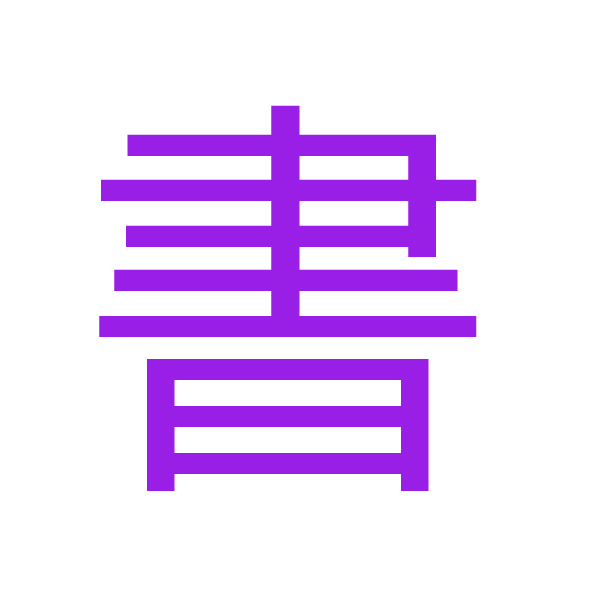
The Kanji: 書 (Ka.ku/Sho) - The "Write" Kanji
1. Meaning and Usage
Core Meanings: To write; writing; document; book
Readings:
Kun'yomi (Japanese reading): か.く (ka.ku)
On'yomi (Chinese reading): ショ (sho)
Common Words and Compounds:
書く (かく / kaku) - To write
辞書 (じしょ / jisho) - Dictionary
図書 (としょ / tosho) - Books
書道 (しょどう / shodō) - Calligraphy
文書 (ぶんしょ / bunsho) - Document
2. Writing and Stroke Order: The Hand with Brush
The correct kanji writing for "書" features a distinctive structure that visually represents its meaning.
Stroke Order:
Stroke 1: Long horizontal stroke
Stroke 2: Short vertical stroke on left
Stroke 3: Short vertical stroke on right
Stroke 4: Short horizontal stroke inside
Stroke 5: Vertical折 through center
Stroke 6: Short horizontal stroke at bottom-left
Stroke 7: Short horizontal stroke at bottom-right
Stroke 8: Final long horizontal stroke closing the base
Stroke 9: Short horizontal stroke at very bottom
Significance of Correct Kanji Writing:
Enclosure Structure: Follows the "create frame first" principle
Layered Horizontals: Multiple horizontal strokes must be parallel and evenly spaced
Balance: The character should appear solid and well-proportioned
3. Historical Origin and Evolution
The history of "書" reveals a clear connection between tools and action.
Oracle Bone Script (甲骨文字):
The earliest form showed:
A hand holding a writing brush
Mouth element below, representing verbal commands being recorded
The complete action of writing down spoken words
Bronze Script (金文):
The form became more stylized, emphasizing the brush-holding hand and the concept of recording.
Seal Script (篆書):
The character evolved into a more abstract form, with the hand and brush transforming into the 聿 component.
Modern Form (楷書):
The modern "書" maintains the essential structure while standardizing the strokes.
Component Analysis:
The character consists of:
聿 (brush/hand with brush) - the writing instrument
曰 (say/speak) - representing what is being recorded
Original Meaning:
The character originally represented "to record spoken words with a brush," specifically:
The act of documenting verbal communication
Creating permanent records of speech
The connection between oral and written language
Cultural Significance:
In Japanese culture, "書" carries profound artistic and educational meanings:
Artistic Tradition: 書道 (calligraphy) as a respected art form
Educational Importance: 習字 (penmanship) as fundamental education
Literary Heritage: 図書館 (library) as repository of knowledge
Modern Application: From traditional brush writing to modern penmanship
The character embodies the Japanese reverence for writing as both practical skill and artistic expression.
Summary
The kanji "書" represents the noble act of preserving thought and speech through writing. Beginning as a vivid pictogram of a hand holding a brush to record spoken words, it evolved into the comprehensive character for all writing activities. Mastering its stroke order and multi-layered structure teaches important principles of Japanese kanji writing. When you learn how to write kanji like "書," you're engaging with a character that captures the very essence of literacy - the transformation of ephemeral speech into enduring written record. This character serves as a powerful testament to human civilization's journey from oral tradition to written culture. From the ancient scribes recording imperial decrees to modern students practicing penmanship, "書" continues to represent the fundamental human achievement of capturing thought and language in permanent form, maintaining its essential meaning while embracing every evolution in writing technology from brush to keyboard.